General Characteristics of Fungi
Asexual Ascomycota - Deuteromycota
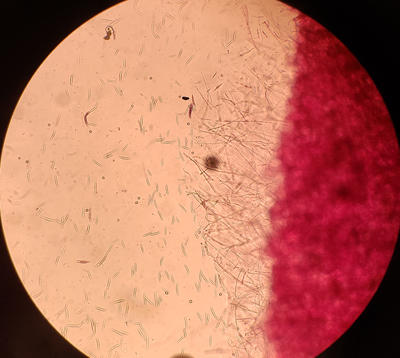
Fusarium mycelium (red) and spores as they appear looking through low magnification of the microscope.
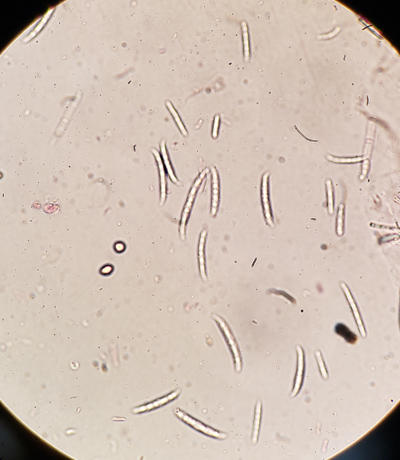
A higher magnification of Fusarium showing the macroconidia (canoe-shaped spores with septations) and also two round microconidia. This fungus produces two types of conidia.
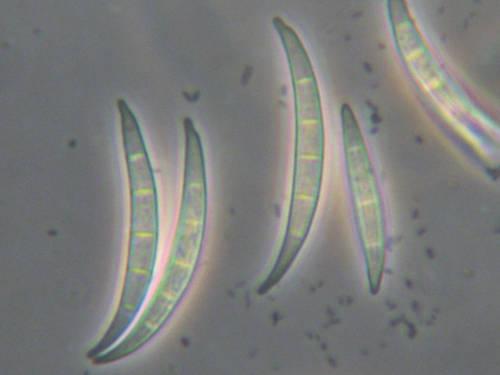
An even higher magnification showing the macroconidia produced by Fusarium. The smaller microconida are not seen in this photograph.
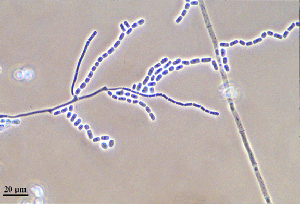
These are spores of a different fungus called Geotrichum. It produces chains of arthrospores at the ends of the hyphae (from www.mycology.adelaide.edu.au/). This fungus demonstrates a different type of asexual spore formation where the ends of the hypahe form cross walls, fall apart and produce spores.
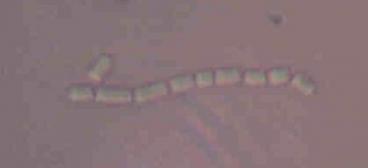
Higher magnification showing the barrel-shaped asexual spores of Geotrichum.
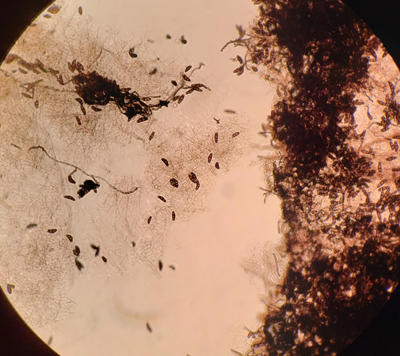
This is a culture of Curvularia. Note the small dark conidia.
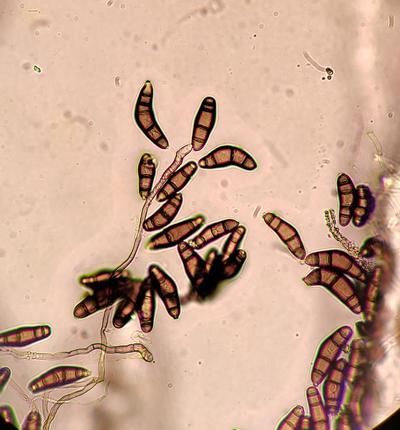
A higher magnification of the Curvularia spores shows them to be dark colored, somewhat curved and have several cells.
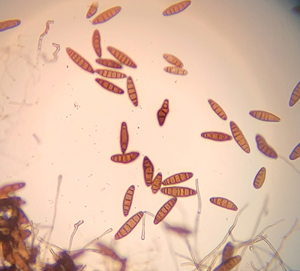
Another fungus observed in the lab that has dark spores that have several cells is Cochliobolus. Note the slight differences in morphology in these spores as compared to Curvularia (above) and Alternaria (below).
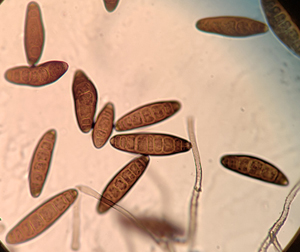
Cochliobolus spores at higher magnification.
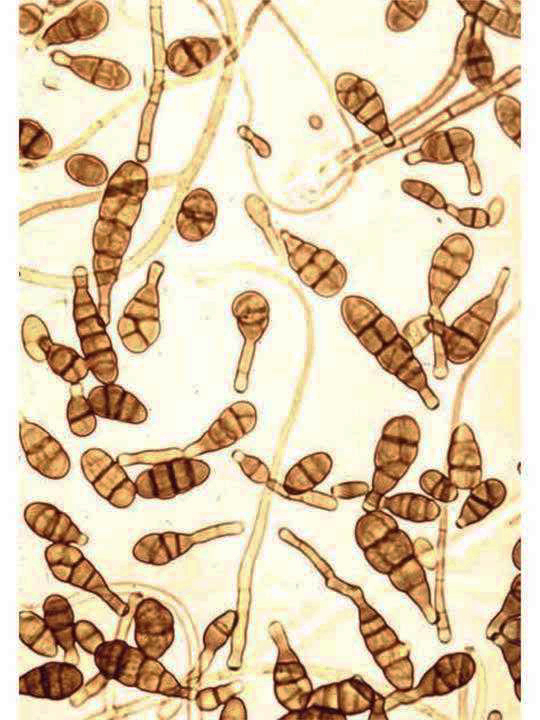
Alternaria spores are darkly pigmented and consist of many cells.